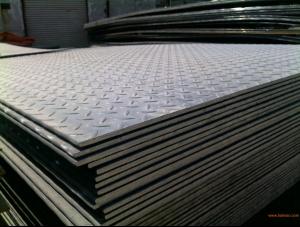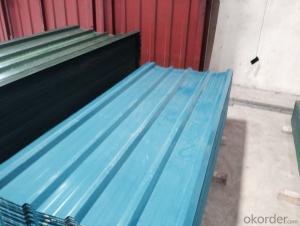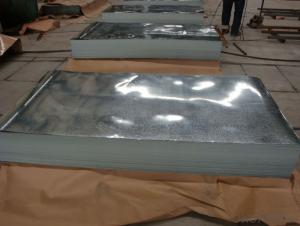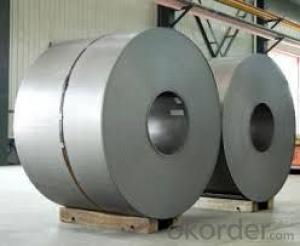Hot rolld checkered plate
- Loading Port:
- China Main Port
- Payment Terms:
- TT OR LC
- Min Order Qty:
- -
- Supply Capability:
- -
OKorder Service Pledge
OKorder Financial Service
You Might Also Like
A tread surface plate is called a pattern plate, English Name: Diamond plate.The pattern of lentil shaped, diamond, round bean shaped, oval hybrid shape,the market to the most common lentil shaped. Pattern plate appearance, canslip, enhanced performance, and many other advantages, such as saving steel in transportation, construction, decoration, equipment around the floor,machinery, shipbuilding and other fields has been widely applied. In general,the use of side of the mechanics pattern plate performance, mechanical performance requirements is not high, so the pattern plate quality mainlyflowering rate, as the pattern of height, the pattern height. At present thecommon thickness on the market ranging from 2.0-8mm, the width of common 12501500mm two. In accordance with the provisions of national standardsGB/T 3277 pattern plate, pattern height should be greater than or equal to the thickness of the 20% substrate. Pattern plate, according to the material(aluminum alloy, stainless steel, ordinary steel etc.) different patterns of different shapes and different weight per square meter adjustment
The following is a common pattern plate theory weight table:
Checkered plate theory weight table (mm)
花纹钢板理论重量表(mm) | ||||
基本厚度 | 基本厚度允许偏差 | 理论质量(kg/m²) | ||
菱形 | 扁豆 | 圆豆 | ||
2.5 | ±0.3 | 21.6 | 21.3 | 21.1 |
3.O | ±O.3 | 25.6 | 24.4 | 24.3 |
3.5 | 土0.3 | 29.5 | 28.4 | 28.3 |
4.O | ±O.4 | 33.4 | 32.4 | 32.3 |
4.5 | ±O.4 | 38.6 | 38.3 | 36.2 |
5.O | +O.4 | 42.3 | 40.5 | 40.2 |
-O.5 | ||||
5.5 | +O.4 | 46.2 | 44.3 | 44.1 |
-O.5 | ||||
6 | +O.5 | 50.1 | 48.4 | 48.1 |
-O.6 | ||||
7 | 0.6 | 59 | 58 | 52.4 |
-O.7 | ||||
8 | +O.6 | 66.8 | 65.8 | 56.2 |
-O.8 | ||||
| | ||||
- Q:Are steel sheets suitable for harsh weather conditions?
- Yes, steel sheets are highly suitable for harsh weather conditions. Steel is known for its durability, strength, and ability to withstand extreme weather elements such as heavy rain, strong winds, and snow. It is also resistant to corrosion, making it a reliable choice for outdoor applications in harsh climates.
- Q:What are the properties of steel sheets?
- Steel sheets have several advantageous properties, including high strength and durability, excellent corrosion resistance, good thermal conductivity, and the ability to be easily formed and welded.
- Q:Can steel sheets be used for architectural purposes?
- Yes, steel sheets can be used for architectural purposes. They are often utilized in construction projects for their durability, strength, and versatility. Steel sheets can be used for roofing, cladding, facades, and structural applications, providing a modern and sleek aesthetic while also offering structural integrity and resistance to weather conditions.
- Q:Can steel sheets be formed into complex shapes?
- Yes, steel sheets can be formed into complex shapes through various metalworking processes such as bending, rolling, stamping, and laser cutting. These processes allow the steel sheets to be manipulated and transformed into intricate and custom shapes, meeting the specific design requirements. The malleability and strength of steel make it possible to form it into complex shapes without compromising its structural integrity. These capabilities are widely utilized in industries such as automotive, aerospace, construction, and manufacturing, where complex and precise components are required.
- Q:What is the difference between galvanized and non-galvanized steel sheets?
- Galvanized and non-galvanized steel sheets differ primarily in their resistance to corrosion. Galvanized steel sheets are coated with a layer of zinc, which acts as a protective barrier against rust and other forms of corrosion. This zinc coating not only provides excellent durability and longevity to the steel sheets but also makes them highly resistant to weathering and exposure to moisture. On the other hand, non-galvanized steel sheets lack this zinc coating, making them more susceptible to rust and corrosion. Without the protective layer, non-galvanized steel sheets may start to corrode when exposed to moisture or harsh environmental conditions. Another difference between galvanized and non-galvanized steel sheets is the appearance. Galvanized steel sheets have a distinct silver-gray finish due to the zinc coating, giving them a more visually appealing look. In contrast, non-galvanized steel sheets have a plain, matte appearance. In terms of cost, galvanized steel sheets are generally more expensive than non-galvanized ones. The additional cost is attributed to the zinc coating, which adds an extra layer of protection and enhances the overall quality of the steel sheets. Overall, the main distinction between galvanized and non-galvanized steel sheets lies in their resistance to corrosion, appearance, and cost. Galvanized steel sheets offer superior protection against rust and corrosion, have a more attractive appearance, but come at a higher cost compared to non-galvanized steel sheets.
- Q:What is the cost of steel sheets?
- The cost of steel sheets can vary depending on factors such as size, thickness, quality, and market conditions. It is best to contact a supplier or check current market prices for an accurate cost.
- Q:Are steel sheets suitable for railway carriages?
- Indeed, railway carriages find steel sheets to be a fitting option. The robustness, resilience, and capacity to endure the ceaseless strain linked with train operations render steel a favored material for these carriages. Steel sheets provide the essential structural strength to uphold the carriage and its occupants, simultaneously safeguarding against impacts and harsh weather conditions. Furthermore, steel boasts relative cost-effectiveness and widespread accessibility, rendering it an optimal selection for the creation of railway carriages.
- Q:What are the advantages of using steel sheets in automotive manufacturing?
- There are several advantages of using steel sheets in automotive manufacturing. Firstly, steel sheets offer high strength and durability, making them suitable for withstanding heavy loads and impacts. This enhances the overall safety of the vehicle and provides protection to the occupants. Secondly, steel sheets can be easily molded and shaped into various complex designs, allowing for greater design flexibility in car manufacturing. Additionally, steel sheets have excellent corrosion resistance, ensuring the longevity of the vehicle and reducing maintenance costs. Lastly, steel sheets are cost-effective compared to alternative materials, making them a preferred choice for mass production in the automotive industry.
- Q:Are the steel sheets suitable for automotive applications?
- Steel sheets are an excellent choice for automotive applications due to their exceptional strength, durability, and versatility. The automotive industry widely employs steel because of these qualities. It offers outstanding crash resistance, making it perfect for ensuring passenger safety in vehicle structures. Furthermore, steel sheets can easily be molded into intricate shapes, enabling the production of various automotive components like body panels, chassis, and frames. Steel also possesses excellent corrosion resistance, which is crucial for enduring harsh environmental conditions. In addition, it is cost-effective and readily accessible, making it a preferred option for automakers. All in all, steel sheets prove to be a dependable and fitting material for automotive applications.
- Q:What is the average weight of a steel sheet per square meter?
- The average weight of a steel sheet per square meter depends on the thickness and type of steel, but it typically ranges from 7.85 to 8.05 kilograms per square meter.
1. Manufacturer Overview |
|
|---|---|
| Location | |
| Year Established | |
| Annual Output Value | |
| Main Markets | |
| Company Certifications | |
2. Manufacturer Certificates |
|
|---|---|
| a) Certification Name | |
| Range | |
| Reference | |
| Validity Period | |
3. Manufacturer Capability |
|
|---|---|
| a)Trade Capacity | |
| Nearest Port | |
| Export Percentage | |
| No.of Employees in Trade Department | |
| Language Spoken: | |
| b)Factory Information | |
| Factory Size: | |
| No. of Production Lines | |
| Contract Manufacturing | |
| Product Price Range | |
Send your message to us
Hot rolld checkered plate
- Loading Port:
- China Main Port
- Payment Terms:
- TT OR LC
- Min Order Qty:
- -
- Supply Capability:
- -
OKorder Service Pledge
OKorder Financial Service
Similar products
New products
Hot products
Hot Searches
Related keywords





























